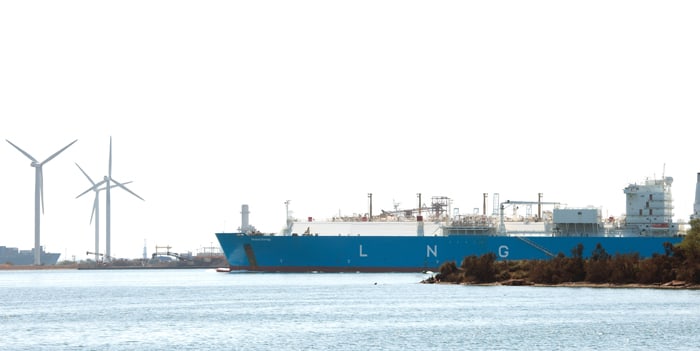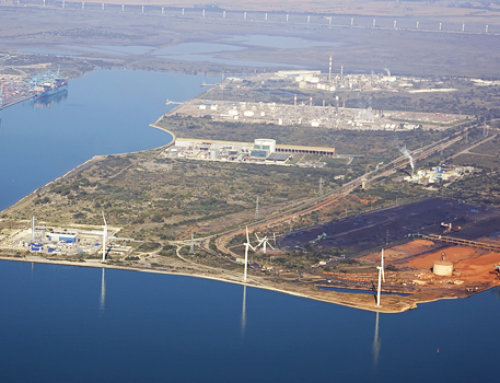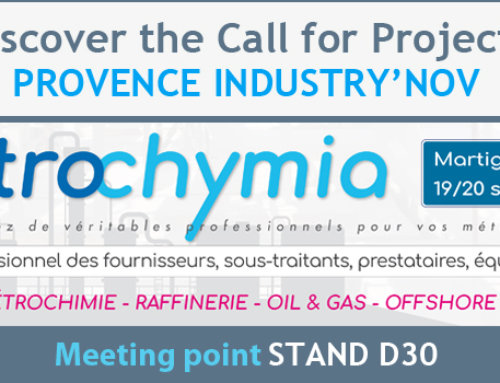THE PORT OF MARSEILLE FOS MOVES TO LIQUEFIED NATURAL GAS (LNG)
As part of its 2014-2018 strategic plan, energy diversification is a priority development area for the Port of Marseille Fos. Investments by Elengy and its subsidiary Fosmax LNG in the methane terminals at Fos-Cavaou and Tonkin put Liquefied Natural Gas (LNG) back at the core of its activities. The infrastructures, which will offer a new bunkering service and a loading station for tank trucks starting in 2019, will help the port to intensify its growth within the framework of energy efficiency plans and European regulatory changes. An asset for the Aix-Marseille-Provence metropolitan area which has just launched the “Provence Industry’Nov” Call of Projects, one objective of which is to promote the energy transition in the industrial sector.
Expand LNG use to open new outlets and better respect the environment
At the core of port activities, fuels that pollute the environment less may in the future hold a larger share. These are the development prospects for the Port of Marseille Fos, which is riding high on the success of Liquefied Natural Gas (LNG), a fuel that emits almost no sulfur, reduces CO2 emissions by 25%, and those of nitrogen oxide (NoX) by 90%.
Through Fosmax LNG, Elengy announced several investments in its Fos-sur-Mer regasification plants, to promote more widespread use of LNG. A modification to the wharf at the Fos-Cavaou methane terminal will make it possible to offer a new bunkering service for small fueling ships starting in 2019, and a loading station for tank trucks will also be operational in addition to the one at Tonkin.
Currently, nearly 5.5M T of LNG pass through the Port of Marseille Fos, including 70% through the methane terminals at Fos-Cavaou and Fos Tonkin. Their transformations, which are intended to densify flows, will help the port to become a true LNG import hub in time.
Opening up new maritime and on-shore markets
The LNG supply at the port is broadly supported by its industrial lessees and the companies within the Aix-Marseille-Provence territory. The Marseille-based charterer CMA-CGM has ordered 9 giant LNG powered container vessels from the Chinese manufacturer CSSC, and Total plans to build its fleet by adding a large bunkering ship to supply them. With its next-generation LNG cruise ships, the Costa Croisières Group has also committed to making Marseille a port of call.
But beyond naval usage, LNG is also an energy solution for road transportation. The Port of Marseille Fos has developed the 1st Natural Gas Vehicle Station for heavy trucks in the Mât de Ricca area (near Distriport and the docks), distributing LNG in part. Thus, this is a major reorientation for the entire logistics sector, which can have a positive influence on the entire logistics chain.
Toward a stronger industrial ecology
The major ambitions of the port community for the growth of LNG in the area attest to a shared desire to move toward a more sustainable economy and an industry in phase with energy innovations.
The launch of the “Provence Industry’Nov” CEI is also an illustration of this. Until October 31, companies, industrials, and even startups can submit to this call for projects intended to meet the environmental challenges of the industry. Within this framework, the establishment of innovative activities concerning new fuels or the circular economy will receive special assistance and preferred real estate within the port. A significant differentiating factor for companies, supported by the Aix-Marseille-Provence metropolitan area in partnership with a group of public and private economic stakeholders.




